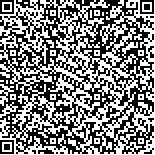| 摘要: |
| [摘要] 目的 探讨三角吻合术应用于全腹腔镜胃癌根治术后消化道重建的效果。方法 选取2014-01~2017-01于该院行全腹腔镜胃癌根治术60例患者,按术式分为三角吻合术组(观察组)30例和Billroth Ⅱ式吻合术组(对照组)30例,将两组患者的一般治疗情况及手术前后营养指标(总蛋白、白蛋白)水平差值进行对比分析,明确三角吻合术消化道重建效果。结果 两组患者吻合时间、术中失血量、排气时间、淋巴结清扫数量、肿瘤组织远近段切缘长度、住院时间等一般治疗情况及术前与术后营养指标差值对比差异无统计学意义(P>0.05);但观察组患者术后镇痛药物数量略少于对照组,且术前与术后6个月的营养指标水平差值较对照组低,差异有统计学意义(P<0.05);身体质量指数(BMI)差值也低于对照组,但差异无统计学意义(P>0.05);同时,观察组术后并发症发生率仅为6.67%,略低于对照组的13.33%,但差异无统计学意义(P>0.05)。结论 三角吻合术应用于全腹腔镜胃癌根治术不仅安全可行,较Billroth Ⅱ式吻合术减少术后疼痛,其对患者营养状态及BMI的远期影响也更佳。 |
| 关键词: 三角吻合术 全腹腔镜胃癌根治术 消化道重建 |
| DOI:10.3969/j.issn.1674-3806.2018.07.21 |
| 分类号:R 735.2 |
| 基金项目: |
|
| Effects of delta-shaped anastomosis on digestive tract reconstruction after total laparoscopic gastric cancer radical resection |
|
ZHAO Xiao-jun
|
|
Department of General Surgery, Jiyuan Tumor Hospital, Henan 454000, China
|
| Abstract: |
| [Abstract] Objective To explore the effects of delta-shaped anastomosis on digestive tract reconstruction after total laparoscopic gastric cancer radical resection. Methods The patients with total laparoscopic gastric cancer radical resection in our hospital from January 2014 to January 2017 were screened according to the ratio of 1∶1, including 30 cases with delta-shaped anastomosis(the observation group) and 30 cases with Billroth type Ⅱ anastomosis(the control group). The general treatment conditions and the levels of nutritional indicators(total protein, albumin) were compared between the two groups before and after the operation. The effects of delta-shaped anastomosis on digestive tract reconstruction were observed. Results There were no significant differences in the anastomosis time, intraoperative blood loss, exhaust time, the number of lymph node dissection, the proximal and distal incisal margin length of tumor, hospital stay and other general treatment conditions, and preoperative and postoperative nutritional indicators between the two groups(P>0.05). The number of postoperative analgesic drugs in the observation group was slightly less than that in the control group, and the nutritional indicators in the observation group before operation and 6 months after operation were lower than those in the control group(P<0.05). There was no significant difference in body mass index(BMI) between the two groups(P>0.05). The incidence rate of postoperative complications in the observation group was lightly lower than that in the control group(6.67% vs 13.33%)(P>0.05). Conclusion Delta-shaped anastomosis is safe and effective for the patients with total laparoscopic gastric cancer radical resection. It can not only shorten the anastomosis time and reduce the postoperative pain, but also has a better long-term impact on nutritional status and BMI compared with BillrothⅡ anastomosis. |
| Key words: Delta-shaped anastomosis Total laparoscopic gastric cancer radical resection Digestive tract reconstruction |

